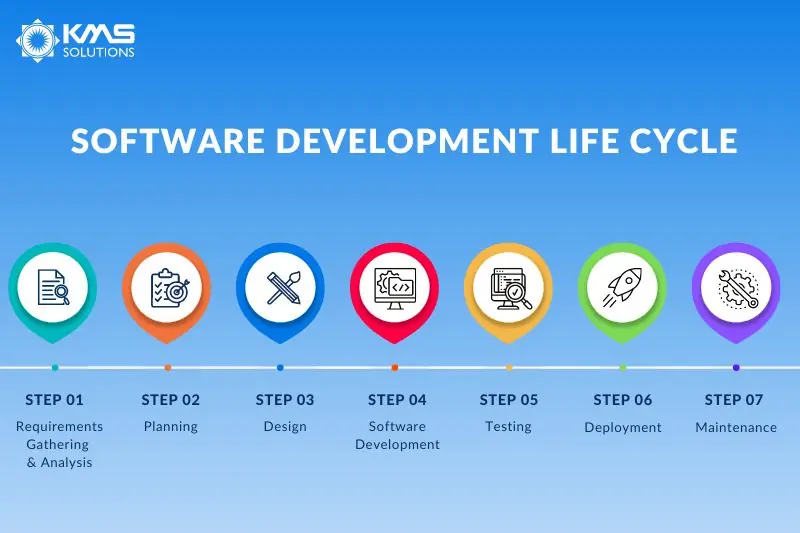Software Development Lifecycle
(2025-09-05T13:24.474Z)
Perplexity Query
(2025-09-05T13:24
.474Z)
Question:
Write a comprehensive one-page article about "Software Development Lifecycle".
Model: sonar-pro
The Software Development Lifecycle (SDLC) is a structured process that guides the creation of software, from initial concept through deployment and ongoing maintenance. By breaking development into well-defined phases, SDLC helps teams produce high-quality software efficiently, meeting technical objectives and user needs while controlling costs and timelines.
[qnxp96]
[nl6dhc]
In today’s software-driven world, understanding SDLC is critical for organizations striving to build reliable, scalable, and secure applications.

SDLC encompasses several core phases, each with specific goals and deliverables that form a roadmap for developers. Commonly, these phases include:
- Deployment: Upon validation, the application is released to users, either through staged rollouts or full production launches.
Practical examples abound across industries. For instance, a fintech company developing a mobile banking app might use SDLC to ensure regulatory compliance, secure data handling, and seamless customer experiences. An ecommerce platform may leverage SDLC to coordinate complex integrations with payment gateways and inventory systems. These processes protect investments, reduce rework, and facilitate scalable solutions.
[p4ndol]
[8mi0wd]
Benefits of adopting SDLC include improved project visibility for stakeholders, better risk management, more predictable schedules and budgets, and higher product quality. SDLC is applied in varied settings, from simple internal tools to complex, globally distributed enterprise platforms.
[nl6dhc]
[6it5r6]
Challenges involve keeping requirements up to date in fast-changing markets, managing diverse team skillsets, and integrating new technologies without disrupting established workflows. Miscommunication, unclear documentation, or inadequate testing can compromise outcomes, so collaboration and rigorous process adherence are vital.
[nl6dhc]

Current State and Trends
Today, SDLC is almost universally adopted in professional software development, with organizations tailoring the model—such as Agile, Waterfall, or DevOps-based SDLC—to suit their culture and needs. Agile SDLC, featuring ongoing stakeholder feedback and iterative development, is predominant in startups and tech-driven enterprises.
[qnxp96]
[nl6dhc]
Many major technology vendors, including Atlassian, IBM, and cloud service providers, offer SDLC tools to facilitate each phase: Jira and Confluence for planning, Jenkins and GitHub for implementation and CI/CD, Selenium for testing, and container orchestration platforms for deployment and maintenance.
[qnxp96]
[nl6dhc]
Recent developments show automation and Artificial Intelligence accelerating many SDLC tasks, from requirements gathering using AI-driven chatbots to continuous testing and autonomous fault detection. Increased adoption of cloud-native architectures and microservices has changed how deployment and maintenance are handled, emphasizing flexibility and rapid scaling.
[6it5r6]

Future Outlook
The future of SDLC will likely feature increased automation in all phases, broader application of AI for intelligent code generation and defect prediction, and even more emphasis on DevSecOps—embedding security throughout the lifecycle. As applications become more distributed and user-driven, SDLC frameworks will further evolve to enable continuous delivery, real-time analytics, and adaptive user experiences. These changes will empower faster innovation while sustaining quality and security.
[nl6dhc]
[6it5r6]
In summary, the Software Development Lifecycle is foundational for delivering robust, adaptable, and user-centered applications. As software demands continue to grow, SDLC will shape the evolution of digital solutions, ensuring they are built responsibly and efficiently.

Citations
[qnxp96] 2025, Sep 04. What is SDLC? Software Development Life Cycle Explained. Published: 2024-12-11 | Updated: 2025-09-04
[p4ndol] 2025, Jun 16. 7 Stages Of SDLC: How To Keep Development Teams Running. Published: 2019-03-21 | Updated: 2025-06-16
[8mi0wd] 2025, Sep 05. Software Development Life Cycle (SDLC) - GeeksforGeeks. Published: 2025-07-14 | Updated: 2025-09-05
[nl6dhc] 2025, Aug 29. What is the Software Development Lifecycle (SDLC)? - IBM. Published: 2025-07-25 | Updated: 2025-08-29
[6it5r6] 2025, Sep 05. What is the Software Development Life Cycle (SDLC)?. Published: 2025-08-11 | Updated: 2025-09-05